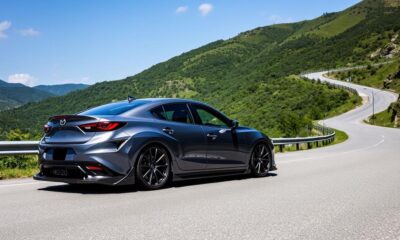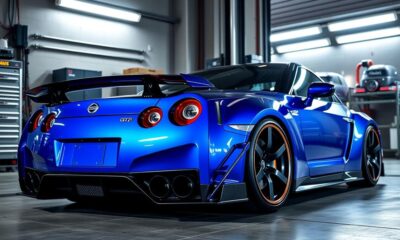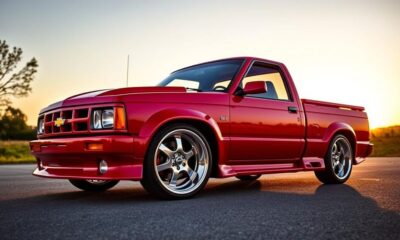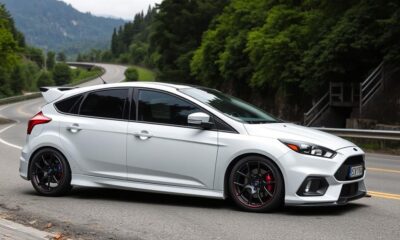Honda Tuning
Honda Civic EF Tuning: Bringing Modern Power to Your Classic Hatchback
Jumpstart your Honda Civic EF tuning journey with modern performance upgrades; discover how to unlock its full potential and enhance your driving experience.
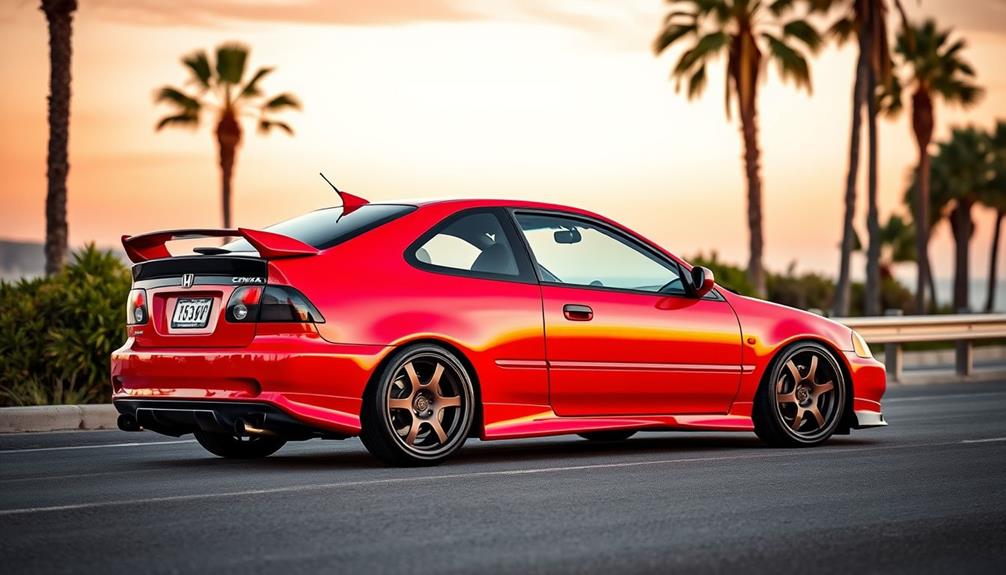
Tuning your Honda Civic EF is an exciting way to combine classic style with modern performance. Consider a B-series engine swap, particularly the B20, for extra torque and power. You'll want to set clear performance goals between 200-300 horsepower and upgrade components like the Z6 or Y8 head to enhance efficiency. Budget around $2,000 for essential parts, including custom mounts and a solid clutch. Don't neglect suspension and lightweight wheels for improved handling. With the right setup, your hatchback can soar. There's much more to explore that'll take your tuning project to the next level.
Key Takeaways
- Consider a B20 engine swap to enhance torque and performance while maintaining reliability in your Honda Civic EF.
- Upgrading to a Z6 or Y8 head provides VTEC and multi-port fuel injection for improved power without significant costs.
- Invest in custom engine mounts and necessary wiring modifications for a successful engine swap and optimal performance.
- Lightweight flywheels and quality clutches paired with B16 transmissions can significantly enhance acceleration and driving dynamics.
- Regular maintenance and monitoring are crucial for maximizing reliability and performance in your tuned Honda Civic EF.
Engine Swap Options
When it comes to tuning your Honda Civic EF, one of the most exciting options is the engine swap. The B-series swaps, particularly the B18 and B20, are popular choices among enthusiasts thanks to their performance and reliability.
The B20 swap stands out, offering a solid increase in torque—about 140 lb-ft—which pairs exceptionally well with the lightweight Civic chassis. This setup means you'll experience better acceleration without the complexities that come with turbocharging.
To guarantee long-term financial stability while enhancing your vehicle, it's crucial to set specific savings goals for your tuning projects.
You'll need to take the budget into account too. Expect to spend around $2,000 for the longblock and transmission, which is a reasonable investment for the performance gain.
While the D16Y8 engine is an easier option for installation and tuning, the turbo D-series can be tempting. However, achieving 250hp with a turbo setup often requires extensive machine work, which can quickly blow your budget.
Keep in mind that custom mounts and additional components are necessary for a B20 swap, along with wiring modifications to switch to port injection.
Upgrading components like the throttle body can further enhance performance, making the swap even more worthwhile.
Performance Goals and Upgrades
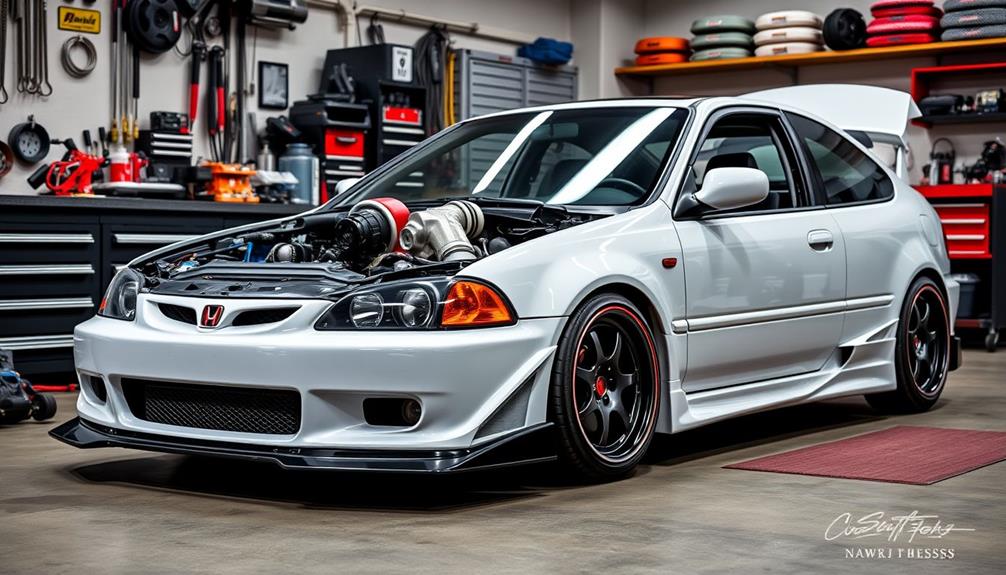
Setting clear performance goals is essential for tuning your Honda Civic EF effectively. If you're aiming for a performance range of 200-300 horsepower, you'll need to carefully select your components while guaranteeing long-distance reliability, especially for daily driving.
Upgrading to a Z6 or Y8 head can enhance your setup with multi-port fuel injection (MPFI), VTEC, and OBD1 compatibility at a relatively low cost. Additionally, conducting thorough keyword research can help identify the best modifications that align with your performance objectives.
To improve your driving experience, consider utilizing a lightweight flywheel paired with a quality clutch, and don't forget to couple this with a B16 transmission for peak acceleration.
Regularly freshening your engine and choosing a strong D16 bottom end, like the D16A6 or D16Y8, will maximize performance and reliability in your modified setup.
Additionally, as you plan your upgrades, think about future enhancements like turbocharging. Align these plans with your initial build to guarantee compatibility and performance consistency, particularly given your budget constraints around $2,000.
Parts and Components

Upgrading your Honda Civic EF requires careful selection of parts and components to secure peak performance and reliability.
Start with custom engine mounts if you're planning a B20 swap, as they're vital for a successful installation. Consider upgrading to a Z6 or Y8 head, which can greatly boost your engine's performance through MPFI (Multi-Point Fuel Injection) and VTEC without breaking the bank.
Additionally, understanding the importance of mastering the art of bug out bags can enhance your preparedness for unforeseen events while you're on the road.
If you're venturing into turbocharging, select a reliable D16 bottom end, like the D16A6 or D16Y8, to guarantee longevity and performance.
Additionally, when converting from a throttle body to a port injection system, expect to make some wiring modifications. Tuning options like Hondata will give you the flexibility to make performance adjustments on the fly.
Don't forget about your intake manifold; a well-designed aftermarket piece can greatly enhance airflow, optimizing your engine's efficiency.
For handling, verify your double wishbone suspension components are in top shape, as they play a vital role in maintaining stability and responsiveness on the road.
This thoughtful combination of parts will set you on the right path to a powerful, reliable Honda Civic EF.
Cost Considerations and Budgeting
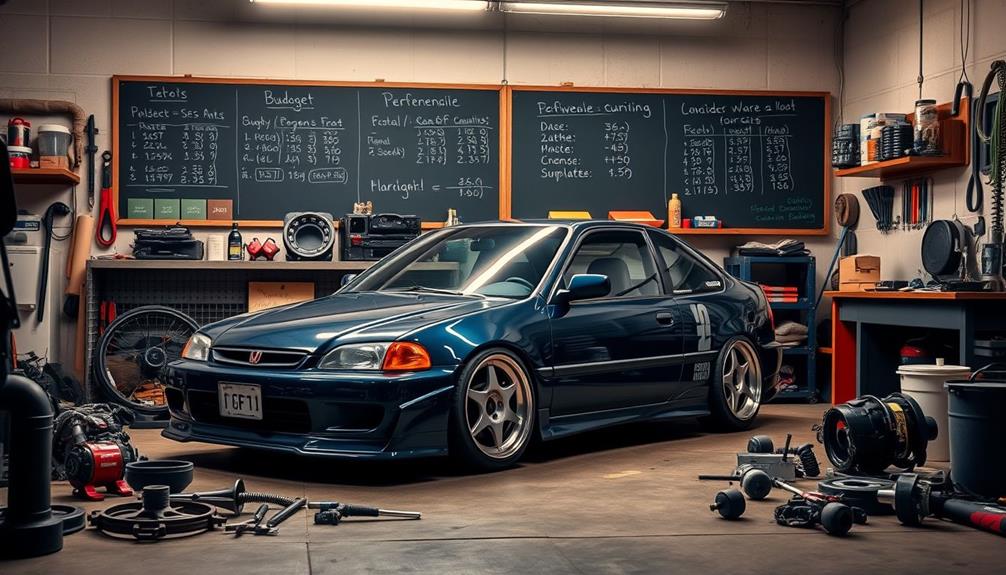
Cost considerations are essential for anyone looking to tune a Honda Civic EF effectively.
With numerous best websites to earn money online available, you can explore ways to fund your tuning project. If you aim for reliable performance around 200-300 horsepower, be prepared to spend over $2,000. Costs can escalate quickly, especially with turbo setups.
A B20 swap is a budget-friendly option at about $2,000, with $600 for the longblock, $400 for a cable transmission, and around $1,000 for custom mounts and wiring.
Investing in a quality turbo kit starts at around $2,500, but don't forget to allocate funds for supporting components to guarantee everything works smoothly.
Engine rebuilds on a D15 can drain your budget due to necessary machine work, so consider sourcing robust bottom ends like the D16A6 or D16Y8 for a cost-effective performance boost.
Additionally, think about enhancing your Civic's driving dynamics with lightweight wheels and suspension upgrades. These modifications can make your ride a lot faster without diving deep into engine modifications.
Community Insights and Reliability

The Honda Civic EF tuning community is a treasure trove of insights, emphasizing the necessity for high-quality parts and regular maintenance to confirm your modified vehicle remains reliable.
To achieve that perfect balance of performance and dependability, consider these key aspects:
- Fresh air intakes that enhance engine efficiency and sound
- Good look modifications that don't compromise functionality
- Regular oil changes to keep your engine running smoothly
Moreover, enthusiasts often recommend monitoring your vehicle's health to prevent potential issues, similar to how cold medications should be chosen wisely for effective relief.
Enthusiasts typically lean towards B-series engine swaps, particularly B20s, for their impressive torque and compatibility with various transmissions. While turbo D-series options might seem enticing, they often come with reliability trade-offs.
It's crucial to recognize that high horsepower builds can sacrifice long-term reliability, so think about your daily driving needs.
Planning future upgrades early can help maintain compatibility and confirm your Civic remains a reliable ride.
Remember, while the community celebrates speed and style, the best builds balance performance with practicality.
Embrace these insights to keep your Honda Civic EF not just looking good but also performing at its best for every drive.
Frequently Asked Questions
How Can I Get More Power Out of My Honda Civic?
To get more power out of your Honda Civic, consider an engine swap, upgrade the head for VTEC, install a turbo kit, and invest in lightweight components. Regular maintenance and quality parts are essential for reliability.
What Year of Honda Civic Is Best for Tuning?
When you're chasing speed like a cheetah on the prowl, the 1992-2000 Honda Civics shine bright for tuning. Each year offers unique potential, but the 1996-2000 models balance modern features and aftermarket support beautifully.
How Fast Can a Tuned Honda Civic Go?
A tuned Honda Civic can reach impressive speeds, often exceeding 150 mph, depending on the modifications. With the right setup, you'll enjoy exhilarating acceleration and enhanced performance that truly transforms your driving experience.
Can You Make a Honda Civic Fast?
Imagine transforming a trusty old bicycle into a sleek racing machine. You can definitely make a Honda Civic fast; swapping engines, upgrading components, and tuning it can release incredible power and performance that'll thrill you every drive.
Conclusion
As you plunge into the thrilling world of Honda Civic EF tuning, don't just dream of the power you can release—make it happen. With the right engine swap and performance upgrades, your classic hatchback can transform into a modern powerhouse. Imagine the rush of hitting the gas, feeling the raw energy beneath you. But remember, every choice counts. Are you ready to take the leap and elevate your ride to a whole new level? The road awaits. Whether you’re reworking the suspension for razor-sharp handling or dialing in the perfect setup with Honda Civic EK9 tuning tips, the possibilities are endless. Fine-tuning your Civic isn’t just about brute force—it’s about balance and precision, crafting a machine that thrives both on the street and the track. So, are you ready to push the limits and turn your vision into reality?
Sophia has a keen eye for automotive aesthetics and a passion for helping car owners express their personal style through their vehicles. With years of experience in designing custom body kits, spoilers, and carbon fiber parts, Sophia brings a wealth of knowledge to our appearance tuning section. Her articles and recommendations are perfect for anyone looking to make their car stand out on the road or at a show.
Honda Tuning
Honda Civic ECU Tuning: The Best Tools for Maximizing Your Car’s Performance
Discover essential tools for Honda Civic ECU tuning that can elevate your vehicle’s performance, but there’s more to uncover for optimal results!

To maximize your Honda Civic's performance, ECU tuning is essential. Tools like Hondata FlashPro and KTuner allow you to optimize fuel mixture and ignition timing easily. These user-friendly interfaces enable real-time adjustments, ensuring your car runs smoothly. Pair your tuning efforts with upgrades such as performance headers and exhaust systems for the best results. Don't forget to use high-quality fuel to protect your engine and enhance boosts. Regular consultations with a professional tuner can help you make the most of your modifications. If you want to discover even more tips for enhanced performance, keep exploring the options available.
Key Takeaways
- Hondata FlashPro and KTuner are top-rated tools for user-friendly ECU tuning with real-time performance monitoring.
- ECU tuning can yield power gains of 30 to 60 horsepower, enhancing your Honda Civic's performance significantly.
- High-quality fuel (91+ octane) is essential for turbocharged models to maximize tuning benefits and prevent engine damage.
- Performance modifications like cold air intakes and aftermarket exhaust systems complement ECU tuning for improved airflow and efficiency.
- Regular consultations with a professional tuner help ensure optimal settings and prevent potential engine damage from improper adjustments.
Understanding ECU Tuning
ECU tuning is a powerful tool for enhancing your Honda Civic's performance. By modifying the ECU settings, you can optimize vital parameters like fuel mixture, ignition timing, and boost levels. This optimization leads to significant power gains, often ranging from 30 to 60 horsepower, depending on your vehicle's existing modifications and the tuning strategy employed.
Understanding common financial terms related to investing can also help you budget effectively for these enhancements.
To achieve these enhancements, you'll need specialized software and tools, such as a tuning cable and a laptop, to communicate with your Civic's ECU. This process allows you to make real-time adjustments that can dramatically improve engine performance.
However, it's important to consult with a professional tuner regularly. They can help guarantee that your vehicle runs smoothly and address any potential issues that might arise during the tuning process.
Additionally, if you own a turbocharged model like the 1.5L Turbo Civic, using high-quality fuel is vital. This not only maximizes the benefits of your ECU tuning but also helps prevent engine damage.
Top Tools for Tuning

When tuning your Honda Civic, having the right tools is vital for achieving ideal performance. Two of the top ECU tuning tools you should consider are the Hondata FlashPro and KTuner. These tools provide user-friendly interfaces that let you easily adjust settings and optimize engine performance, especially for 10th generation Civics.
As the demand for skilled technicians increases, particularly in fields like AI Cybersecurity Jobs, the need for precise tuning and performance enhancement becomes ever more important.
With real-time monitoring of engine parameters, you can make precise adjustments based on performance data and driving conditions. This capability is essential for those looking to improve airflow and enhance overall efficiency. Proper tuning can increase horsepower by 30 to 60, helping you maximize your Civic's potential, whether it's naturally aspirated or turbocharged.
Additionally, many ECU tuning tools support custom maps, allowing you to tailor your tuning experience according to your individual modifications and fuel types. This flexibility guarantees that you can extract the most power from your setup.
Regular updates and strong manufacturer support keep these tuning tools compatible with the latest engine management strategies, guaranteeing your Honda Civic continues to perform at its best.
Key Performance Modifications

To release your Honda Civic's full potential, you'll want to contemplate key performance modifications that work in tandem with ECU tuning. One of the most effective upgrades you can make is installing performance headers. These components greatly improve airflow, allowing your engine to breathe better, which complements the gains achieved through ECU tuning. When you pair these modifications, you can expect a horsepower increase of 30 to 60, enhancing your car's overall performance and responsiveness.
Additionally, guaranteeing your vehicle's air quality is ideal, similar to how regular air purifier maintenance enhances indoor environments, can contribute to better engine performance.
Moreover, consider upgrading your exhaust system for even greater results. A well-designed aftermarket exhaust can further enhance airflow, making your engine run more efficiently. Just remember, if you have a 1.5L Turbo engine, using high-quality fuel (91+ octane) is essential to maximize the benefits of any tuning and modifications.
Furthermore, don't overlook the fact that aftermarket tunes can also improve your fuel economy. This means that you can enjoy enhanced performance without sacrificing daily driving efficiency.
Regular consultations with a professional tuner will guarantee all your modifications are aligned, keeping your Honda Civic in ideal health as you release its true potential.
Benefits of Aftermarket Tuning

Aftermarket tuning opens up a world of possibilities for your Honda Civic, greatly enhancing its performance and driving experience. By refining the ECU settings, you can see power gains of 30 to 60 horsepower, making your Civic feel more alive on the road. This boost in power not only improves acceleration but also enhances overall driving enjoyment.
Additionally, it's important to be aware of potential risks with modifications and guarantee that your tuning process is done by reputable professionals to avoid potential investment risks similar to those seen in financial markets.
Moreover, aftermarket tuning can lead to better fuel economy, as it allows for tailored adjustments that maximize efficiency. When you pair these modifications with higher quality fuel, like 91+ octane for turbo models, you can further increase power output and engine responsiveness.
In addition to raw power, aftermarket tuning can help improve handling. Many tuners can adjust suspension settings and other parameters, allowing your Civic to corner more effectively and respond to your inputs with precision.
Regularly consulting with a tuner after modifications is essential to guarantee your vehicle's performance remains top-notch and avoid potential damage from improper settings.
Ultimately, aftermarket tuning transforms a standard Honda Civic into a standout performer, making it much more competitive in both casual driving and performance scenarios.
Choosing the Right Upgrades

Choosing the right upgrades for your Honda Civic is vital to maximizing its performance potential. Start by considering a cold air intake, which can greatly enhance airflow to your engine. This upgrade helps improve combustion efficiency, setting the stage for peak performance.
Additionally, explore options like a high-efficiency wood pellet stove, which can provide insights into improving combustion dynamics. Next, invest in a performance exhaust system. This not only reduces back pressure but also allows for a smoother exit of exhaust gases, further boosting engine output.
Once these upgrades are in place, you can delve into ECU tuning. This process can increase your Civic's horsepower by 30 to 60, depending on your modifications and the fuel you use.
For the best results, especially with the 2016+ Honda Civic 1.5L Turbo, use 91+ octane fuel. Remember, regular consultation with a professional tuner is essential. They'll tailor your ECU adjustments to your specific upgrades, ensuring both performance and reliability.
Frequently Asked Questions
How to Increase Performance on a Honda Civic?
To increase your Honda Civic's performance, consider upgrading the ECU, using high-octane fuel, installing a cold air intake, enhancing the exhaust system, and improving suspension. Regularly consult a professional tuner for best results tailored to your needs.
Does ECU Tuning Make Your Car Faster?
Yes, ECU tuning can make your car faster. By optimizing engine parameters like fuel maps and ignition timing, you'll experience increased horsepower, improved throttle response, and better acceleration, all contributing to a more exhilarating driving experience.
What Year of Honda Civic Is Best for Tuning?
If you're looking for the best year of Honda Civic for tuning, the 2016 model stands out. Its 1.5L Turbo engine offers incredible potential, giving you significant power gains with the right modifications and tools.
How Much Does It Cost to Get a Honda Tuned?
When it comes to tuning, you're looking at costs ranging from $300 to $1,200, depending on what you need. Basic tunes start around $300, while advanced ones can really break the bank!
Conclusion
In the quest for performance, tuning your Honda Civic's ECU is akin to a sculptor chiseling away at marble to reveal a masterpiece. With the right tools and modifications, you can harness your car's true potential, transforming it into a thrilling ride. Embrace the journey of aftermarket tuning; it's not just about speed, but crafting a unique driving experience that reflects your passion. So, gear up and let your Civic become the envy of the roads!
Sophia has a keen eye for automotive aesthetics and a passion for helping car owners express their personal style through their vehicles. With years of experience in designing custom body kits, spoilers, and carbon fiber parts, Sophia brings a wealth of knowledge to our appearance tuning section. Her articles and recommendations are perfect for anyone looking to make their car stand out on the road or at a show.
Honda Tuning
Honda Pilot 2015 Tuning: Maximizing the Power of Your SUV
Discover how to unleash your 2015 Honda Pilot’s full potential with tuning options that could transform your driving experience beyond expectations.
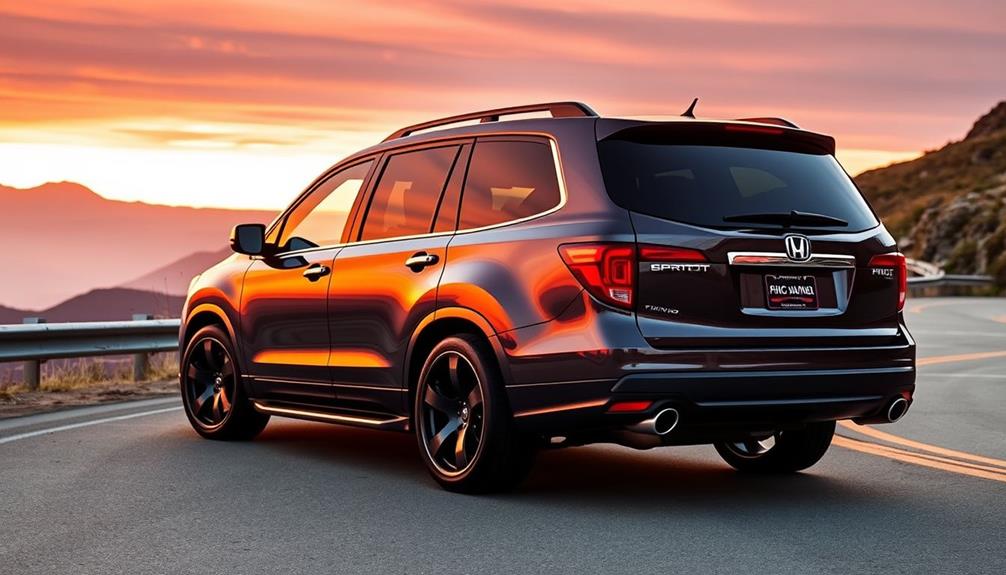
To maximize the power of your 2015 Honda Pilot, consider several tuning options that enhance performance. Start with a Stage 1 or Stage 3 OBDII Module, which optimizes engine potential and boosts horsepower. Adding a cold air intake system can increase efficiency and power by up to 10%. You might also explore throttle controllers for quicker response. Performance chips can improve both horsepower and fuel efficiency, offering noticeable gains in your driving experience. While some challenges exist in customization, there are effective solutions available that will elevate your SUV's performance. Discover more about fine-tuning your ride's capabilities.
Key Takeaways
- Upgrade with a Stage 1 or Stage 3 OBDII Module for significant horsepower and torque improvements, enhancing overall driving performance.
- Consider a Cold Air Intake System to increase horsepower by up to 10% and improve fuel efficiency by optimizing airflow.
- Install a Throttle Controller for 36 throttle maps, enhancing acceleration response and driving experience without complex modifications.
- Explore performance chips for simple installation and noticeable improvements in horsepower and fuel efficiency, potentially saving you money in the long run.
- Be cautious of warranty risks when customizing, as certain upgrades may void your engine's warranty or complicate future repairs.
Understanding Honda Pilot Performance
When it comes to understanding Honda Pilot performance, it's vital to recognize that this SUV prioritizes comfort and utility over raw power. The 2015 Honda Pilot features a 3.5L V6 engine delivering a modest 250 horsepower and 253 lb-ft of torque. While this might suffice for daily driving, it can feel lacking during high-speed acceleration or passing maneuvers.
The Pilot's transmission focuses on smooth shifts, which leads to a noticeable deficit in mid-high end torque, especially around 5,000 RPM when VTEC engages. To enhance your driving experience, consider the benefits of choosing the best heat pump for ideal comfort in varying weather conditions, which can greatly improve your overall quality of life. Additionally, energy-saving features in modern systems can help reduce overall energy consumption, making them a smart investment for homeowners looking to enhance their comfort and efficiency features of the ultimate heat pump.
If you're looking to enhance your Pilot's performance, consider various tuning solutions that can provide a power increase. Options like the GAN chip can improve efficiency by up to 15%, maintaining engine reliability while enhancing performance.
Additionally, performance upgrades such as supercharging can greatly boost torque and overall output.
While the Pilot shines in passenger comfort and capacity, it's important to remember that performance-oriented alternatives like the Cayenne and Explorer Sport offer more aggressive acceleration.
For those serious about tuning, modifications like changing the camshaft or adding performance air intake systems can refine your Pilot's power delivery, but always consider warranty implications and part compatibility.
Key Tuning Options Available
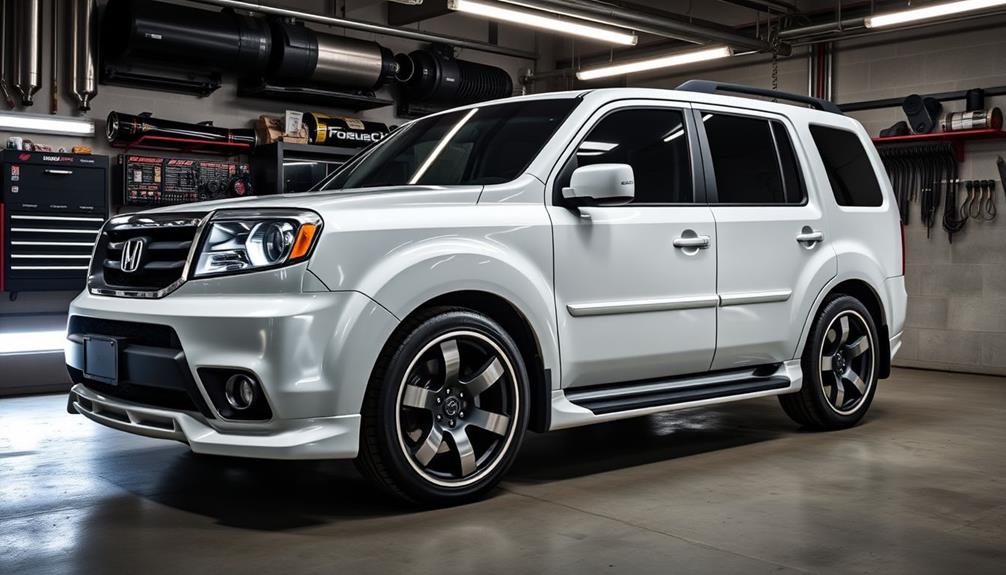
Releasing your Honda Pilot's potential is easier than you might think, thanks to a variety of tuning options tailored for the 2015 model. Here's a quick look at some key tuning solutions that can enhance performance and fuel economy:
| Tuning Option | Price | Benefits |
|---|---|---|
| Stage 1 OBDII Module | $99.99 | Reveals hidden engine potential |
| Cold Air Intake System | $89.95 | Boosts horsepower and efficiency |
| Stage 3 OBDII Module | $239.95 | Considerably enhances torque |
| FN Tuned Throttle Controller | Varies | 36 throttle maps for better response |
| Supercharger Upgrade | $5,000-$10,000 | Major torque improvement |
These tuning solutions can maximize your Honda Pilot's capabilities without compromising reliability. For instance, a cold air intake optimizes air intake during combustion, enhancing throttle response and overall engine efficiency. The advanced GAN tuning can boost fuel economy by up to 15%, ensuring safe modifications while preserving your warranty. With these options, you can easily enhance your Pilot's driving experience while enjoying improved performance and efficiency.
Enhancing Driving Experience
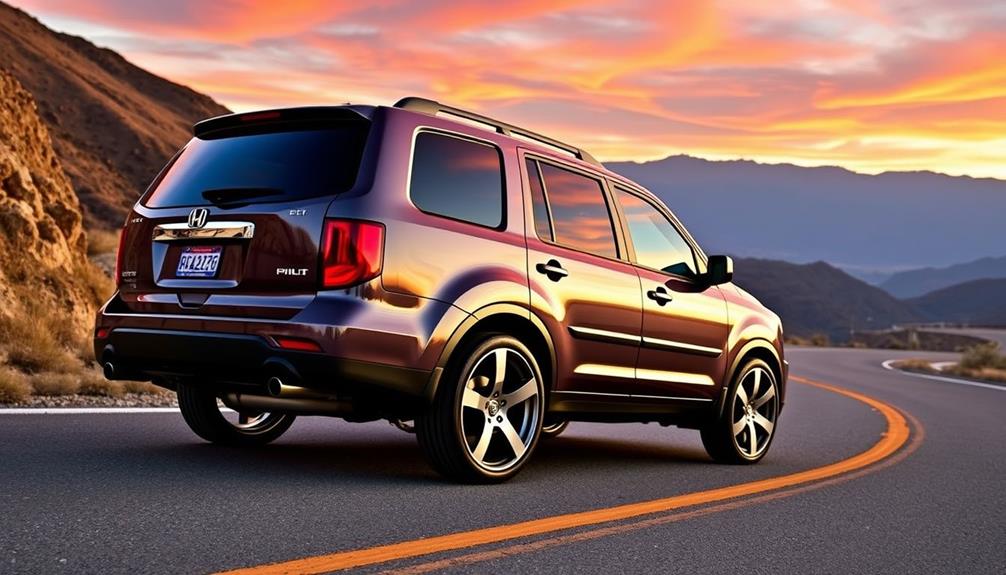
When you tune your 2015 Honda Pilot with a performance chip module, you can release extra horsepower and boost fuel efficiency, making every drive more enjoyable.
Additionally, understanding the impact of various upgrades on your vehicle's performance can greatly enhance your overall experience. Upgrading to a performance air intake system further enhances your vehicle's responsiveness and power.
These changes not only improve your driving experience but also allow you to enjoy the road like never before.
Innovative coffee gear and accessories can elevate the brewing experience.
Performance Chip Modules
If you're looking to boost your Honda Pilot's performance, performance chip modules could be the answer. These modules release hidden engine potential, giving you more horsepower and enhancing your driving experience.
For instance, understanding your vehicle's budget for upgrades can help you determine the best performance enhancements that fit your financial plan. For example, the Stage 1 OBDII Module offers impressive upgrades at a competitive price of $99.99, while the more advanced Stage 3 OBDII Module, priced at $239.95, utilizes a next-gen multi-core CPU for maximum performance.
Here are some key benefits of installing performance chip modules:
- Increased horsepower: Reveals your engine's full potential.
- User-friendly installation: Plug-and-play design means no cutting or complex procedures.
- Fuel savings: Enhancements can lead to up to 15% better fuel efficiency.
- Cost-effective: Balances performance upgrades with potential savings on fuel.
- Money-back guarantee: Guarantees satisfaction with your investment.
Air Intake Systems
Upgrading your Honda Pilot's air intake system is a straightforward way to enhance its driving experience. By switching to a cold air intake system, you can optimize airflow, potentially increasing horsepower by up to 10%. This boost in power not only makes your SUV feel more responsive but also improves overall performance.
Furthermore, as technology advances, the integration of new systems can lead to exciting developments in vehicle performance, similar to AI Software Engineer Jobs that are shaping the future of tech.
Using T304 aluminum piping in these air intake systems enhances durability and allows for better airflow, which greatly contributes to improved throttle response. You'll notice a more immediate reaction when you press the gas pedal, making your driving experience more engaging and enjoyable.
What's great is that performance air intake systems are designed for easy installation, requiring no additional modifications. This means you can quickly enhance your engine's efficiency without hassle.
In addition, an improved air intake can work in conjunction with ECU upgrades, leading to even greater performance gains.
Investing in a quality air intake system not only boosts power but also enhances fuel efficiency, making it a cost-effective modification for your Honda Pilot.
Challenges in Customization

Customizing a 2015 Honda Pilot presents unique challenges that enthusiasts must navigate. You'll quickly find that tuning solutions are often limited due to the vehicle's engine design, which may require a methodical approach to identify the best upgrades for performance.
This means you'll need specialized research to identify compatible upgrades for enhanced performance. Fuel system limitations also complicate forced induction systems, requiring you to be diligent in finding reliable tuning options.
When diving into modifications, be prepared for increased complexity and costs. Here are some key considerations to keep in mind:
- Custom parts may require additional modifications.
- Modifications like supercharging can range from $5,000 to $10,000.
- Certain upgrades might void your engine warranty.
- It's essential to find a reputable tuning company to guide your process.
- Budgeting is important for effective performance enhancements.
Carefully weigh the risks of modifications, such as AFM delete kits, which could lead to warranty issues.
Performance Chips Overview

When you're looking to boost your Honda Pilot's performance, performance chips can make a noticeable difference.
These tuning modules come in various types, each offering unique benefits, from increased horsepower to better fuel efficiency.
Implementing performance enhancements can be similar to assessing personal risk tolerance levels when investing; understanding how these chips work will help you make an informed choice for your vehicle.
Types of Performance Chips
Performance chips are essential tools for enhancing your Honda Pilot's engine capabilities, allowing you to tap into its hidden potential.
These enhancements not only improve performance but also contribute to a better driving experience by optimizing fuel efficiency and responsiveness.
With several options available, you can choose the one that best fits your tuning needs and budget.
High-quality content boosts credibility.
- Stage 1 OBDII Module: Starts at $99.99, enhancing horsepower and torque.
- Stage 3 OBDII Module: Priced at $239.95, offers maximum performance with a next-gen multi-core CPU.
- Stage 4 OBDII Module: Costs $259.95, includes boosted performance and LCD monitoring for models from 2006 and later.
- Plug-and-Play Design: All performance chips guarantee easy installation without cutting or complicated modifications.
- 100% Money-Back Guarantee: Each chip is backed by a guarantee, assuring customer satisfaction with the enhancements.
Benefits of Tuning Modules
Upgrading your Honda Pilot with tuning modules can considerably enhance your driving experience in several ways. Performance chips like the Stage 1 OBDII Module reveal hidden engine potential, optimizing tuning parameters to boost horsepower, all starting at just $99.99.
If you're looking for maximum performance, the Stage 3 OBDII Module, priced at $239.95, features a next-gen multi-core CPU that delivers significant power increases. Additionally, investing in your vehicle's performance can be likened to diversifying a retirement portfolio, as both strategies aim to enhance value and security in the long run.
One of the standout benefits of these tuning modules is their ability to improve fuel consumption. You could save up to 15% on fuel, making these chips a cost-effective solution for enhancing engine performance while also being kinder to your wallet.
Plus, installation is a breeze with a plug-and-play design, so you won't need any complex modifications or cutting. Each performance chip comes with a 100% money-back guarantee, ensuring you can try out these enhancements with confidence.
With easy installation, potential for increased horsepower, and improved fuel efficiency, tuning modules present a fantastic opportunity to maximize your Honda Pilot's capabilities. Don't miss out on the chance to elevate your driving experience today!
Air Intake Systems Benefits
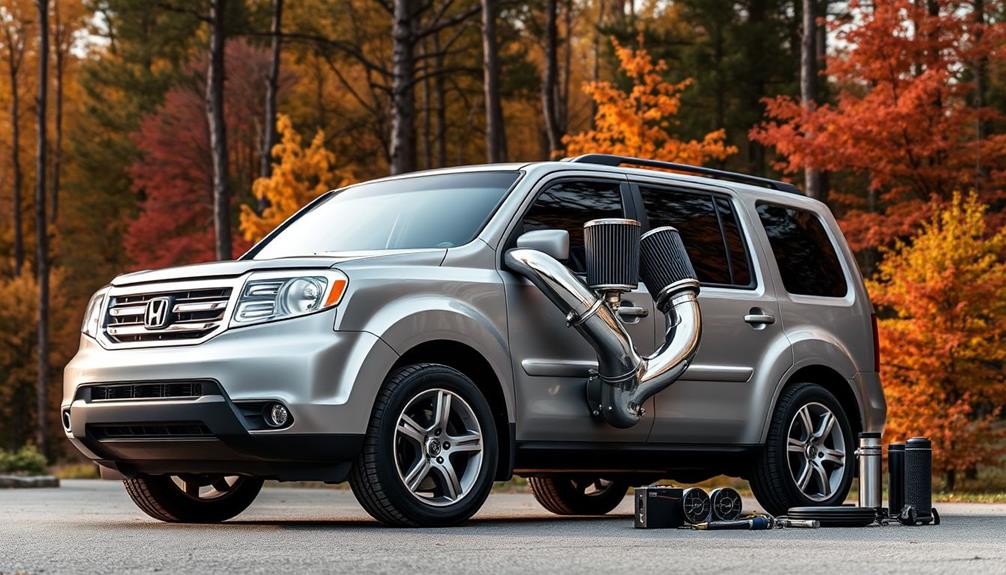
Improving your Honda Pilot's performance starts with optimizing airflow, and that's where air intake systems come into play. By upgrading to a performance air intake system, you can expect a boost in horsepower and torque by up to 10%. These systems enhance engine efficiency by ensuring your engine gets the airflow it needs during combustion.
Additionally, selecting the right components can improve overall vehicle performance, just like choosing the right cold medications can enhance your health.
Here are some key benefits of installing an air intake system:
- Increased Horsepower: Experience a noticeable performance boost.
- Improved Fuel Efficiency: Enjoy potential savings of up to 15% in fuel consumption.
- Enhanced Throttle Response: Feel a quicker response when you accelerate.
- Durable Materials: Most systems use lightweight T304 aluminum, ensuring longevity.
- Easy Installation: Upgrade without needing additional modifications.
Cold air intake options, like the $89.95 model for 2009-2015 Pilots, are specifically designed to draw cooler, denser air that contains more oxygen. This results in better combustion and overall engine performance.
With an upgraded air intake system, you not only maximize your SUV's power but also improve fuel efficiency, making your driving experience more enjoyable and economical.
Voltage and Diagnostic Tools

When it comes to enhancing your Honda Pilot's functionality, voltage and diagnostic tools play an essential role in optimizing performance. Using the right tools can stabilize your vehicle's voltage and keep diagnostics in check, ensuring peak performance.
Here's a quick overview of some valuable tools you might consider:
| Tool | Price |
|---|---|
| Mega Raizin Module | $49.99 |
| Raizin Module | $44.95 |
| LCD D1 Module | $39.95 |
| Universal OBD2 Code Reader | $29.95 |
| OBD2 Splitter Extension Cable | $18.95 |
The Mega Raizin Module not only stabilizes voltage but also provides a digital display, enhancing your Pilot's performance. The Raizin Module improves efficiency and is compatible with existing performance tunes. Meanwhile, the LCD D1 Module connects directly to the battery, boosting audio quality and fuel economy.
For diagnostics, the Universal OBD2 Code Reader allows you to read diagnostic codes and check engine lights, while the OBD2 Splitter Extension Cable enables connection of two devices to the OBD2 port, enhancing your diagnostic capabilities.
Frequently Asked Questions
How to Get Better Mpg Honda Pilot?
To get better MPG, maintain your vehicle regularly with timely oil changes, consider a performance air intake system, and utilize ECO driving mode. These steps can enhance efficiency, boost performance, and save you money at the pump.
Can You Modify a Honda Pilot?
Sure, think of your Honda Pilot as a canvas waiting for your artistic touch. You can modify it with performance upgrades or suspension enhancements, but be cautious—some changes might void warranties or affect reliability.
How Much Horsepower Does a Honda Pilot SUV Have?
The Honda Pilot SUV has 250 horsepower at 6,300 RPM, providing a balanced performance for your driving needs. With its torque rating of 253 lb-ft, it offers solid power for everyday use and towing.
How Many Miles Can You Put on a 2015 Honda Pilot?
When it comes to the 2015 Honda Pilot, you can really go the distance. With proper care, many drivers report reaching over 200,000 miles, and some even hit 300,000 miles with diligent maintenance.
Conclusion
In summary, tuning your 2015 Honda Pilot can truly transform your driving experience, just like discovering a hidden gem on a familiar road. By exploring performance chips, air intake systems, and voltage tools, you're not just maximizing power; you're also revealing new adventures. So, as you hit the gas, remember that a few smart tweaks could lead to unexpected thrills and a newfound love for your SUV. Who knew a little customization could make such a big difference?
Sophia has a keen eye for automotive aesthetics and a passion for helping car owners express their personal style through their vehicles. With years of experience in designing custom body kits, spoilers, and carbon fiber parts, Sophia brings a wealth of knowledge to our appearance tuning section. Her articles and recommendations are perfect for anyone looking to make their car stand out on the road or at a show.
Honda Tuning
Honda Civic 2004 Coupe Tuning: Enhancing Performance in Your Sporty Car
Harness the power of your 2004 Honda Civic Coupe with essential tuning tips that can transform your driving experience—discover the possibilities inside!

Tuning your 2004 Honda Civic Coupe can dramatically boost its performance and driving experience. Start by upgrading your air intake system with a K&N cold air intake for improved throttle response and a few extra horsepower. Next, consider a full exhaust system to enhance torque and acceleration. Don't forget about your ignition system; high-performance spark plugs and upgraded coils will enhance combustion efficiency. Regular maintenance, like fluid changes and tire care, is vital too. Interested in more detailed tuning options and community tips? There's plenty more waiting to enhance your Civic's potential!
Key Takeaways
- Upgrade to a K&N 69-1008 cold air intake for improved throttle response and a 3-4 horsepower increase.
- Install a full exhaust system with a 4-2-1 header to enhance torque and acceleration for city driving.
- Replace ignition components with high-performance spark plugs and coils to optimize combustion efficiency and throttle response.
- Regular maintenance, including fluid changes and air filter cleaning, is crucial for maintaining optimal performance.
- Consider cosmetic enhancements like HID headlights and an aero kit to improve aesthetics and aerodynamics.
Tuning Goals for Your Civic
When you're tuning your 2004 Honda Civic Coupe, your primary goals should focus on enhancing performance and achieving a more enjoyable driving experience. To reach these goals, consider implementing performance upgrades that target the engine's air intake and exhaust system.
A short-ram air intake, like the K&N 69-1008, can provide an expected increase of 3-4 horsepower while slightly improving gas mileage. This upgrade not only boosts power but also enhances throttle response, making your daily drives more engaging.
Additionally, using an airless paint sprayer for your DIY projects can streamline the painting process, allowing you to customize your car's exterior with ease.
Additionally, upgrading your exhaust system is vital for improving torque, especially in city driving conditions. A full exhaust system that includes headers, a catalytic converter, a resonator, and a muffler can greatly enhance your car's acceleration, giving you that extra punch when you need it most.
While the D17 engine's coil-on-plug ignition limits aftermarket options, focusing on efficient air and fuel flow through these modifications is essential. By prioritizing these tuning goals, you'll create a Civic that's not only responsive but also a joy to drive, making every journey more exciting.
Essential Performance Upgrades
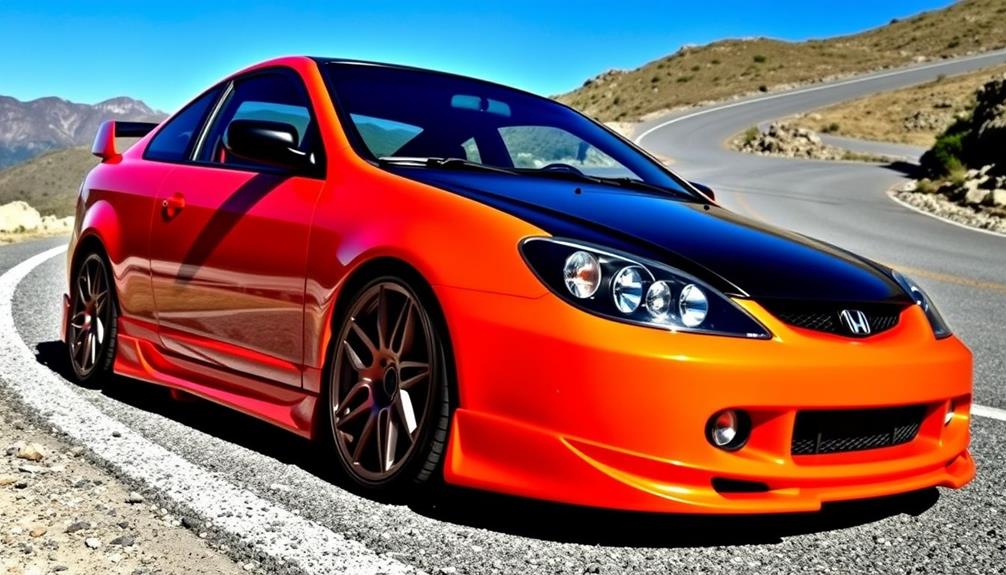
Enhancing your 2004 Honda Civic Coupe's performance involves some key upgrades that can make a significant difference in how it drives. To truly elevate your driving experience, consider these essential performance upgrades:
1. Cold Air Intake: Upgrading to a K&N 69-1008 short-ram air intake can provide an anticipated increase of 3-4 horsepower while also improving throttle response, making city driving more exhilarating.
Additionally, understanding your investment regulations may help you budget for these upgrades effectively.
2. Exhaust Systems: A full exhaust system upgrade is essential. Installing a 4-2-1 header will optimize exhaust flow, enhancing torque and improving acceleration, especially from 20 mph to 45 mph.
This upgrade not only boosts performance but also gives your Civic a more aggressive sound.
3. Routine Maintenance: Don't forget that regular maintenance, like fluid changes and air filter replacements, complements these upgrades.
Keeping your engine healthy is crucial for maximizing your Civic tuning efforts.
Ignition System Enhancements
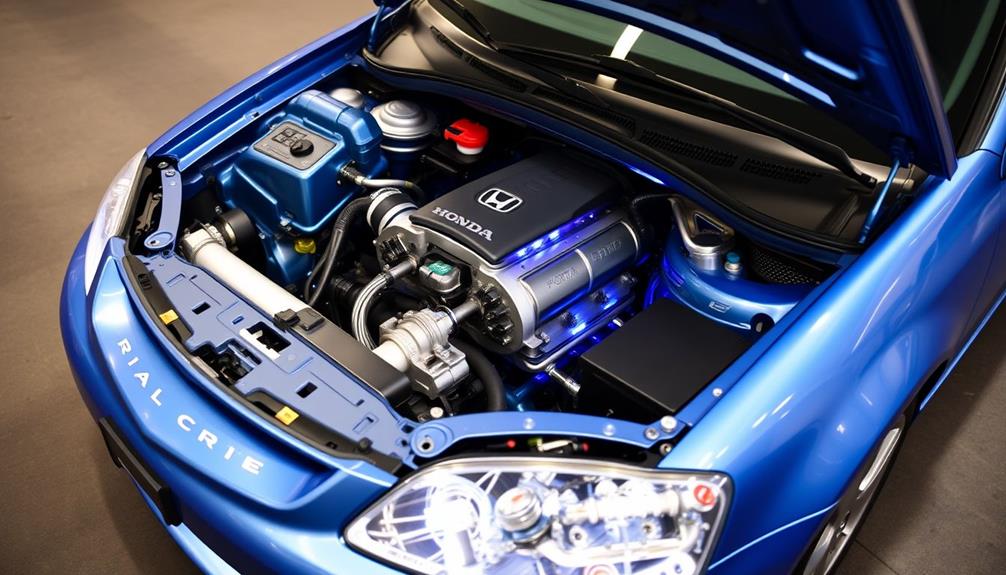
When it comes to enhancing your 2004 Honda Civic's ignition system, there are several recommended upgrades that can boost performance.
Utilizing natural remedies alongside conventional medications may inspire some creative thinking in your tuning process.
While the coil-on-plug setup limits some aftermarket options, you can still benefit from high-performance spark plugs and upgraded ignition coils.
Recommended Ignition Upgrades
Upgrading your ignition system can greatly enhance your 2004 Honda Civic LX Coupe's performance. A well-tuned ignition system boosts engine efficiency and throttle response, making your driving experience more enjoyable.
Additionally, consider how essential oils like peppermint and eucalyptus can support overall well-being while you're on the road, as they promote respiratory health and reduce congestion essential oils for respiratory health.
Here are three recommended upgrades for maximizing your Civic's ignition system:
- High-Performance Ignition Coils: Consider options from AEM or MSD. These can improve spark energy, leading to better throttle response and overall engine performance.
- Premium Spark Plugs: Installing NGK Iridium or Denso Platinum spark plugs guarantees reliable sparks under high RPM conditions. This enhances combustion efficiency and can potentially increase horsepower.
- Performance Ignition System: Upgrading your ignition distributor optimizes timing and works best when paired with other modifications. A high-output ignition coil pack can also boost spark voltage, improving fuel atomization and engine efficiency during acceleration.
Coil-on-Plug System Limitations
While the ignition upgrades mentioned earlier can greatly improve your Civic's performance, it's important to understand the limitations of the coil-on-plug system. This system offers efficient spark delivery, but it restricts your aftermarket upgrade options compared to traditional distributor setups.
As existential themes resonate in contemporary discussions of meaning, tuning your vehicle can also be viewed as a journey of self-expression and authenticity. You can upgrade the ignition coils to enhance spark energy, which may improve throttle response and combustion efficiency, yet the gains are often modest.
If you're considering high-performance ignition components like spark plugs and wires, they can help maximize the effectiveness of your coil-on-plug system. However, the real limitation surfaces when you think about forced induction.
While the coil-on-plug system is reliable for stock applications, its capacity may not hold up under high boost conditions. For serious performance tuning, you might need a more robust ignition solution, especially if you plan to push your Civic further with forced induction.
Adjusting ignition timing through aftermarket tuning solutions can provide some improvement, but it's essential to recognize that the coil-on-plug system has its boundaries. Understanding these limitations will help you make informed decisions for your Civic's tuning journey.
Transmission and Drivetrain Considerations

The transmission and drivetrain of your 2004 Honda Civic LX Coupe play an essential role in its overall performance and driving experience. To enhance these components and elevate your ride, consider the following upgrades:
1. ACT Heavy-Duty Clutch: Upgrading to an ACT heavy-duty clutch can greatly improve power transfer and provide quicker engagement. This means better acceleration, especially during spirited driving.
Additionally, making sure your vehicle maintains peak performance is important, much like how appliance maintenance plans can extend the lifespan of household appliances.
2. Performance Transmission Fluid: Utilizing performance transmission fluid enhances shifting performance and reduces response times. This upgrade is particularly beneficial during stop-and-go traffic, giving you a smoother driving experience.
3. Transmission Cooler: Installing a transmission cooler helps maintain peak operating temperatures, especially during heavy use. This not only prolongs the life of your automatic transmission but also guarantees consistent performance.
Additionally, while you're enhancing your Civic's drivetrain, consider implementing a short-ram air intake. This can reduce intake restrictions, improving throttle response and overall performance.
Maintenance and Cosmetic Upgrades
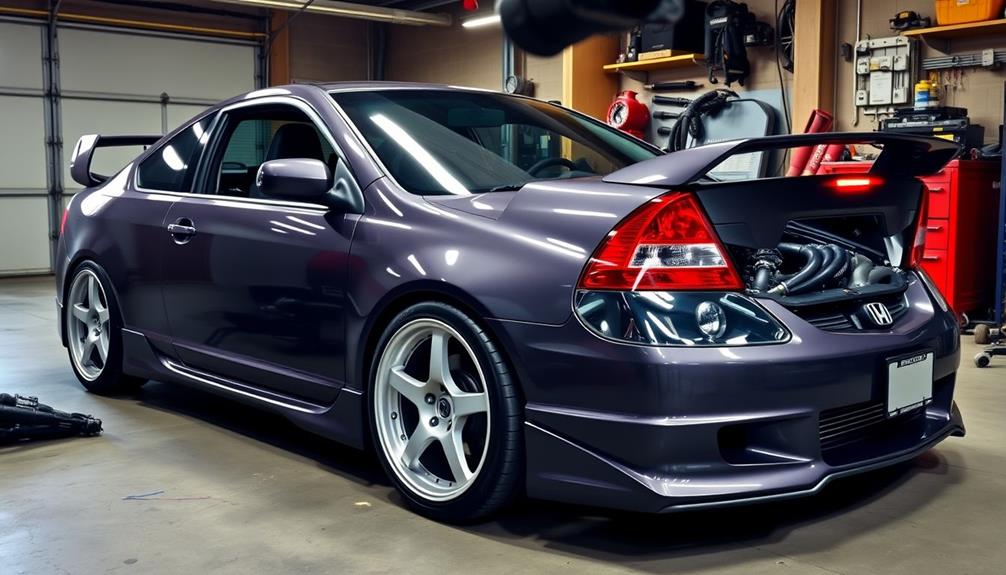
To keep your 2004 Honda Civic running at its best, regular maintenance is key—think oil changes and fluid checks every few thousand miles.
Additionally, ensuring that your vehicle is free from dust and allergens can enhance your driving experience, especially for those with sensitivities, so consider using a vacuum designed for superior dust removal.
But it's not just about performance; cosmetic upgrades like new paint jobs or tinted windows can give your ride a fresh look while enhancing visibility.
Let's explore how you can balance essential upkeep with stylish enhancements to truly make your Civic your own.
Regular Maintenance Practices
Maintaining your 2004 Honda Civic Coupe isn't just about keeping it running; it's essential for enhancing performance and preserving its appearance. By following regular maintenance practices, you not only guarantee longevity but also improve the overall driving experience. Here are three key areas to focus on:
1. Fluid Changes: Regularly change your transmission fluid, coolant, and brake fluid to keep your vehicle performing at its best.
Additionally, consider monitoring your vehicle's air quality to prevent allergens and pollutants from affecting your driving comfort, similar to how you'd maintain an air purifier for improved air quality in your home.
2. Tire Care: Maintain proper tire pressure and schedule regular alignments. This helps improve handling and extends tire life, contributing to better driving dynamics.
3. Air Intake System: Clean and maintain your air intakes, replacing air filters as needed. This enhances airflow and engine performance, especially after any modifications.
Additionally, routine inspections of your ignition system, including spark plugs and coils, can greatly enhance engine efficiency.
Don't forget to schedule regular washes and detailing sessions to prevent rust and corrosion, protecting your Civic's appearance and structural integrity.
Cosmetic Enhancement Ideas
After ensuring your 2004 Honda Civic Coupe is in top mechanical shape, it's time to focus on its visual appeal.
Start by considering hail dent repair and a fresh paint job to restore your car's aesthetic, enhancing its overall look and value. You can also install window tinting for improved privacy and style, while reducing heat inside, making your drive more comfortable.
Incorporating unique accessories and upgrades can elevate your car's charm, much like how innovative coffee gear and accessories can enhance the brewing experience for coffee lovers.
Upgrading to HID headlights can greatly enhance nighttime visibility and modernize your front-end appearance. Lightweight aftermarket rims are another excellent option; they not only enhance the sporty look but also improve handling by reducing unsprung weight.
For those wanting a more aggressive stance, consider adding an aero kit, such as a front lip spoiler and rear diffuser, which can improve aerodynamics and stability at higher speeds.
If you're looking to lower the car, there are various options available that can improve both looks and performance.
Community Insights and Recommendations

When diving into the world of tuning your 2004 Honda Civic Coupe, community insights can be invaluable. Engaging with fellow enthusiasts can help you navigate the tuning process effectively. To foster creativity in your tuning journey, consider adopting a mindset that balances aesthetics and performance, similar to the principles found in design thinking.
Here are three recommendations that come highly endorsed by the community:
- Prioritize Cosmetic Upgrades: Many enthusiasts suggest focusing on cosmetic enhancements like fresh paint and upgraded lighting before diving into performance modifications. The cost-benefit ratio often favors aesthetics for older models like the Civic.
- Consider K-Series Engine Swaps: If you're aiming for a significant power increase, explore K-series engine swaps. This option provides a boost without requiring extensive modifications to your existing engine.
- Regular Maintenance is Key: Don't overlook the importance of routine maintenance. Regular fluid changes and brake system checks are vital for keeping your Civic performing at its best, especially after any upgrades.
Community members frequently share experiences with specific aftermarket parts, like K&N air intakes and performance exhaust systems, enhancing both power and throttle response.
Connecting with local tuning forums or clubs can further enrich your tuning journey, giving you access to tried-and-true recommendations.
Budget-Friendly Tuning Options

As you explore the tuning possibilities for your 2004 Honda Civic Coupe, budget-friendly options can make a significant difference without breaking the bank. Upgrading to a K&N 69-1008 short-ram air intake is a smart choice; it can give you an estimated 3-4 horsepower increase and improve throttle response at a reasonable cost.
Consider investing in a full exhaust system, including headers and a performance muffler. Models like the DC Sports header not only enhance airflow but also help maintain torque, which is essential for performance.
While ignition component upgrades for the D17 engine are limited, brands like MSD offer parts that can improve spark delivery for better combustion.
Don't overlook cosmetic enhancements either; lightweight rims and HID headlights can boost your Civic's look while enhancing performance without significant expense. Regular maintenance, including fluid changes and inspections, guarantees that these budget-friendly upgrades perform at their best and extend the life of your vehicle's components.
Lastly, pairing these upgrades with an ECU tuner can further optimize performance, helping to improve fuel economy while you enjoy the thrill of your tuned Honda Civic.
Frequently Asked Questions
How Do I Make My 2004 Honda Civic Faster?
To make your 2004 Honda Civic faster, consider upgrading to a high-performance air intake and exhaust system, installing lightweight components, and maintaining your ignition system. These enhancements will boost horsepower and improve acceleration considerably.
What Year of Honda Civic Is Best for Tuning?
If you're looking for the best year for tuning, consider the 2016 and later Civics, especially those with turbo engines. They offer excellent performance potential, a strong aftermarket, and can handle significant modifications effectively.
Does Sport Mode Make Civic Faster?
Think of sport mode as a turbocharged wind; it can certainly enhance your drive, but it won't necessarily make your Civic faster. Real performance gains come from tuning and modifications that maximize your vehicle's potential.
What Should I Do to My Honda Civic to Make It Faster?
To make your Honda Civic faster, upgrade the air intake for better airflow, install a full exhaust system for enhanced torque, and consider lightweight modifications to reduce weight. These changes greatly improve performance and responsiveness.
Conclusion
To sum up, tuning your 2004 Honda Civic coupe can release a performance monster that'll make your heart race. By focusing on essential upgrades and enhancements, you'll transform your sporty car into a true road warrior. Remember, it's not just about speed; it's also about reliability and style. Engage with the community for tips, and you'll soon be cruising with a ride that turns heads faster than a speeding bullet. Get started, and enjoy the journey!
Sophia has a keen eye for automotive aesthetics and a passion for helping car owners express their personal style through their vehicles. With years of experience in designing custom body kits, spoilers, and carbon fiber parts, Sophia brings a wealth of knowledge to our appearance tuning section. Her articles and recommendations are perfect for anyone looking to make their car stand out on the road or at a show.
-

 Tesla Tuning2 months ago
Tesla Tuning2 months agoTesla Cybertruck Sales: How Many Have Been Sold So Far?
-

 Tesla Tuning2 months ago
Tesla Tuning2 months agoWhere Are Tesla Cars Made? Explore the Manufacturing Locations!
-

 Tesla Tuning3 months ago
Tesla Tuning3 months agoTesla Battery Replacement Costs Revealed: How Much Will You Pay?
-

 Tesla Tuning2 months ago
Tesla Tuning2 months agoSupercharging Tesla: How Long Does It Really Take?
-
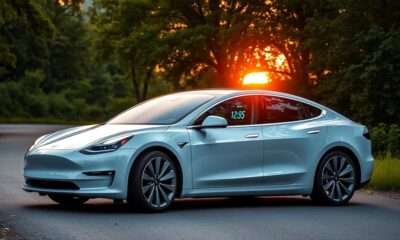
 Tesla Tuning3 months ago
Tesla Tuning3 months agoTesla Mileage: How Many Miles Can You Drive on a Full Charge?
-

 Tesla Tuning2 months ago
Tesla Tuning2 months agoHow Much Does It Cost to Lease a Tesla? Get the Full Breakdown!
-

 Tesla Tuning3 months ago
Tesla Tuning3 months agoTesla CarPlay: Does Tesla Have Apple Integration?
-

 Tesla Tuning3 weeks ago
Tesla Tuning3 weeks agoTesla Fire Incidents: How Many Teslas Have Caught Fire?














